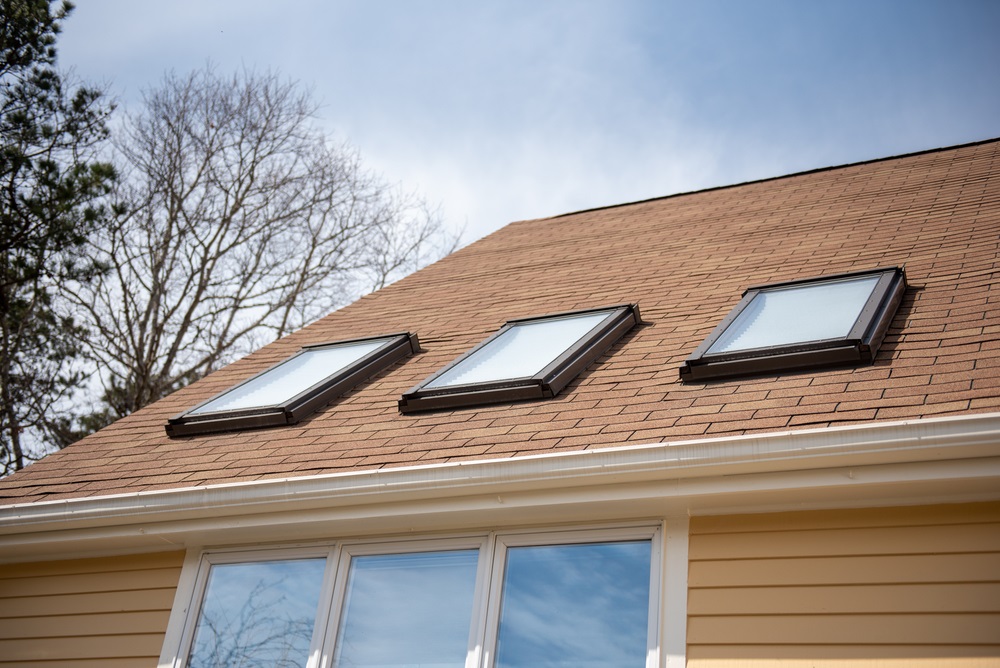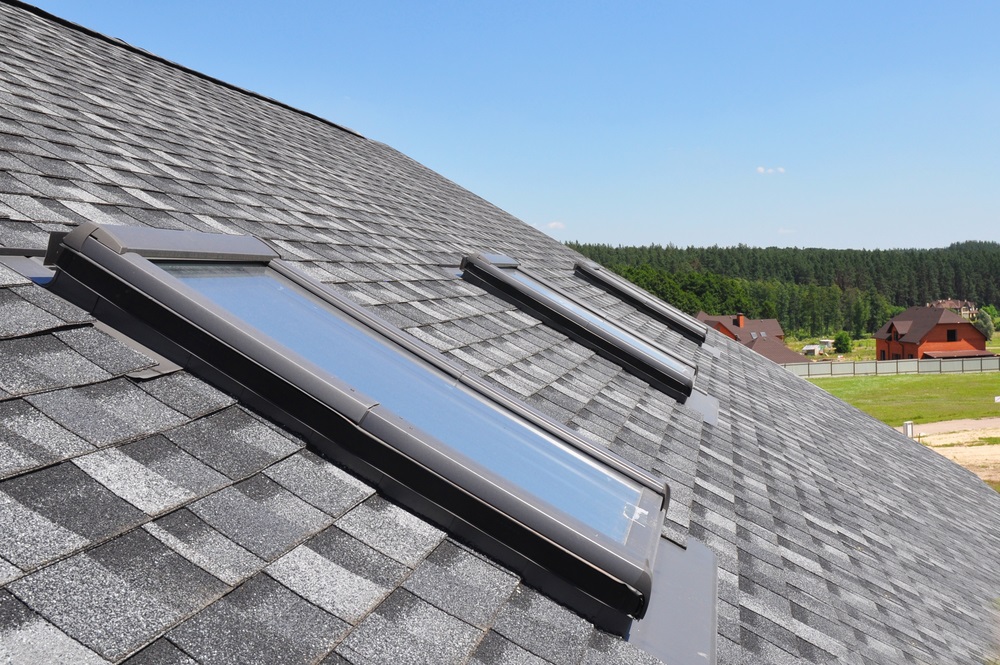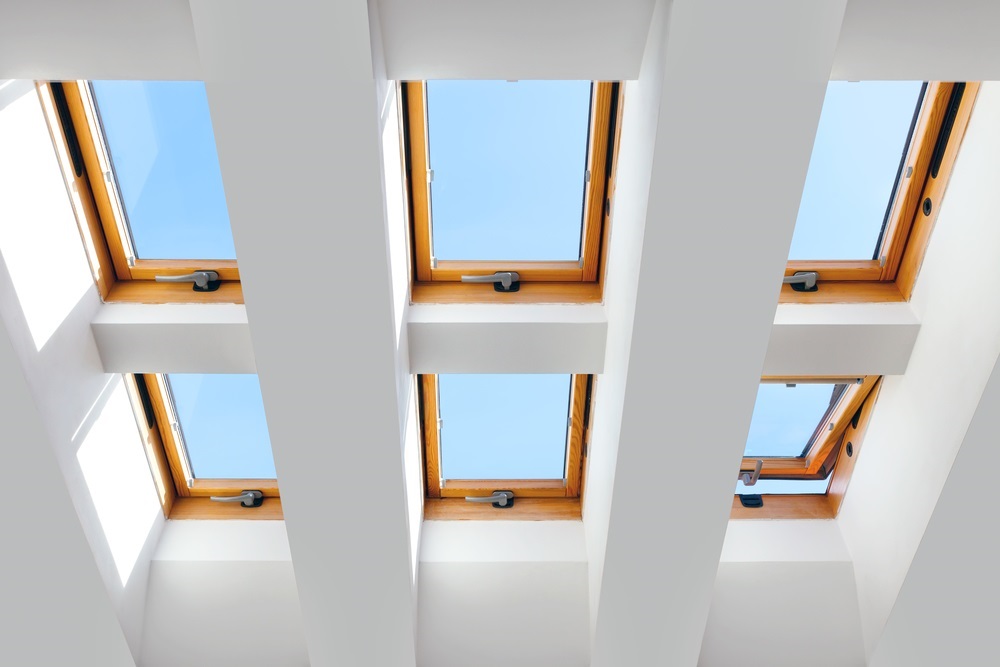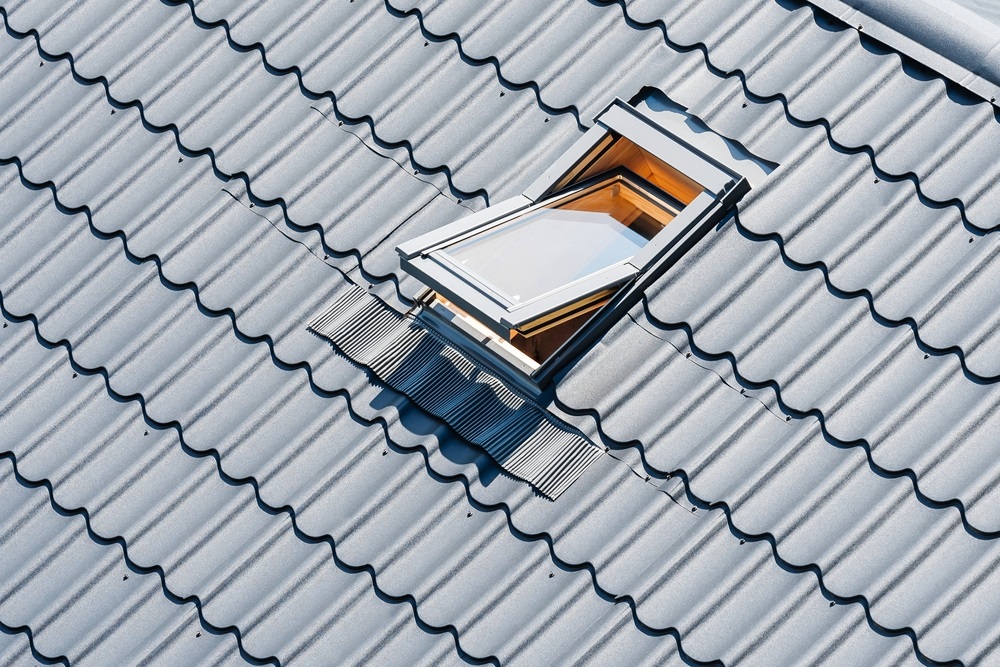The idea of skylights, which spread the tempting splendour of natural light into our living spaces, has been universally adopted by the realms of architecture and design for a long time.
Skylights are windows in the roof or ceiling that let sunlight enter, creating an exclusive and uplifting ambience.
The different facets of skylights, like “how do skylights work?”, their use, varieties, methods of construction, and advantages and disadvantages of skylights, will be covered in detail in this post.
What is a Skylight?
Since olden times, skylights have been used as architectural elements to bring the beauty of natural light into our living spaces. A skylight on roof is simply holes in a ceiling that let sunlight through, bringing a distinctive and energising atmosphere.
Skylight living room is intended to improve the interior atmosphere and offer many advantages, such as more natural light and energy efficiency.
We shall explore all facets of skylights in this article, including their function, varieties, methods of construction, and advantages and disadvantages of skylights.
The Purpose of Skylights: Natural Light for a Brighter Interior
Skylight on roof is essential in architecture and interior design because they distribute and catch natural light, which lessens the need for artificial lighting and makes a place appear brighter and livelier.
Natural light benefits our well-being because it fosters a sense of tranquilly, uplifts the mood, and increases productivity. Skylights are especially useful in locations like corridors, restrooms, or interior areas that don’t have windows or have limited access to natural light.
Types of Skylights

1. Fixed Skylights: A Window to the Sky
The most typical kind of ceiling skylights is fixed ones, which are intended to stay still and always give a view of the sky. They may be put on flat or sloped roofs. Skylights Canberra are available in a variety of sizes and forms, including rectangular, square, and circular.
Large volumes of natural light may be brought into space easily, and fixed skylights can also serve as a magnificent focal point.
2. Ventilated Skylights: A Breath of Fresh Air
The ability for the room to be ventilated is another advantage of ventilated skylights. When ventilation is required, they can be manually or electrically operated, assisting in temperature and airflow control.
In places where moisture and smells tend to build up, such as kitchens and bathrooms, ventilated Skylight on roof is especially helpful.
3. Tubular Skylights: Light up Small Spaces
Sun tunnels, another name for tubular skylights, are portable and adaptable choices for lighting tiny rooms. They are made out of a reflective tube that collects light from the roof and sends it through a diffuser into the inside.
For spaces with little roof space or places that need concentrated lightings, such as closets, hallways, or alcoves, tubular skylights are a good option.
Pros of Tubular Skylights: Bringing Sunshine Indoors
i. Energy Efficient: Saving on Lighting Costs
Because they capture natural sunshine and lessen the need for artificial lighting during the day, tubular skylights are very energy-efficient. They aid in lowering energy use and utility costs by efficiently lighting tiny spaces.
ii. Versatile: Perfect for Bold Spaces
In locations where regular skylights cannot be constructed owing to a lack of roof space, structural limitations, or design difficulties, tubular skylights are especially helpful. Because of their small size and positioning versatility, they are the perfect choice for lighting up small spaces like closets, corridors, or rooms with obscured views.
iii. Daylight Harvesting: Promoting Well-being
Our health and well-being are positively impacted by natural light. Tubular skylights increase the general comfort and liveability of the region by bringing sunshine into areas that would otherwise stay dark. Tubular skylights help to a healthier and more comfortable atmosphere by fostering a connection to the outside and promoting the circadian rhythm.
Limitations of Tubular Skylights

i. Limited Illumination Range
Tubular skylights offer a smaller range of light dispersion than bigger skylights because of their compact form. While they are great for tiny spaces, they might not be enough to appropriately light bigger rooms.
ii. Dependency on Sunlight Availability
For best results, tubular skylights require direct sunlight. The quantity of natural light entering the area will be lessened if the sun is not shining or is blocked by clouds or shadows. As a result, the location and environment can affect how successful they are.
iii. Potential Heat Gain
In warmer areas, direct sunshine can contribute to heat gain as well. Tubular skylights may raise the temperature in the space, possibly requiring extra cooling techniques to keep occupants comfortable.
Elements of Ceiling Skylights: The Mechanics of Sunlight Entry
A. Frame & Curb: The Foundation of Skylight Stability
The skylight’s stability is guaranteed by the frame and curb, which offer structural support. They are often constructed to endure the elements from materials like wood, metal, or vinyl.
B. Glazing: The Windowpane to Natural Light
The translucent material used to cover the ceiling skylights’ opening is referred to as glazing. Both glass and plastic may be used to make it, and each has its benefits. While plastics like acrylic or polycarbonate offer higher impact resistance and insulating qualities, glass gives greater clarity and durability.
C. Flashing: Guaranteeing Water-Tautness
A crucial element in preventing water intrusion near the ceiling skylights is flashing. It is often fitted around the skylight’s borders to form a watertight barrier, and it is constructed of metal.
D. Diffuser: Scattering Light in a Sophisticated way
Tubular skylights contain the diffuser as a part. It is a decorative component that diffuses and spreads the natural light that comes in via the tube to illuminate the space evenly and softly.
E. Shades and Blinds: Regulating Light Intensity
Some ceiling skylights come with the option of installing curtains or shades to regulate how much light enters the room. The use of these add-ons enables customization of natural light intensity, privacy, and glare reduction.
Design & Construction of Skylights: Pathway for Sunbeams
Skylights are built with durability, usefulness, and aesthetic appeal in mind. Modern skylights roof use cutting-edge materials and technical methods to endure weather, stop leaks, and offer the best insulation.
It is crucial to get expert advice when thinking about installing skylights roof so they can evaluate the structural needs and make sure the right Bunnings skylight installation procedures are used.
How to Choose the Best Skylight

a. Consider the Purpose & Location
Consider the space’s unique requirements before skylight installation. Decide if the objective is to improve ventilation, maximise natural light, or both. To choose the best sort of skylight, take into account aspects such as room size, orientation, and lighting conditions.
b. Assess Energy Efficiency
Choose skylights with excellent ratings for energy efficiency. Look for glazing alternatives with low emissivity coatings, such as double or triple-pane glass, that offer the best insulation. Additionally, think about skylights roof with built-in shade mechanisms to control light and heat as necessary.
c. Skylight Installation & Maintenance Requirements
Skylight installation takes skill to ensure good sealing and stop leaks. Analyse the installation procedure’s difficulty to decide if you need expert help along with skylight installation cost. Consider the long-term maintenance requirements as well of skylights roof, such as repairing worn-out parts or cleaning the glass and take those into account when making your choice.
d. Seek Professional Advice
Consult with architects, designers, or experts in skylights who may offer professional guidance catered to your unique needs. They may aid in making the right skylight type selections, figuring out the finest locations, and skylight installation cost, and taking into account any structural issues, including skylights Perth prices.
Pros of Skylights: The Benefits of an Open Ceiling
1. The abundance of Natural Light
Skylights flood interior areas with natural light, giving them a light and airy feel. Even the deepest crevices may become hospitable, well-lit regions thanks to skylight orange.
2. Enhanced Aesthetics and Visual Appeal
Any room benefits from the distinctive architectural element of skylights Wollongong, which adds visual interest and improves the overall aesthetics. They can be created in a modern, classic, or minimalistic design to go well with the structure such as Velux skylights.
3. Connection with the Outdoors
Skylights provide a direct link to the sky and the outside world. They offer glimmers of the moon, night-time stars, and shifting weather patterns. This connection to the natural world can promote serenity and make living more immersed.
4. Potential Health and Well-being Benefits
Numerous health advantages of exposure to natural light include elevated vitamin D synthesis, enhanced mood, and better sleep. You may improve your general well-being and create a healthier atmosphere by adding skylights to your living areas.
Cons of Skylights
1. Risk of Heat Gain and Loss
Large skylights or those with poor glass, in particular, can cause heat gain during the summer and heat loss during the winter. This could lead to higher energy costs for heating or cooling, accordingly.
2. Potential for Glare and UV Exposure
Skylights that let direct sunlight in can glare, which is irritating for occupants. Additionally, over time, UV radiation can cause the fading of furniture, carpets, and artwork. Consider UV-protective glazing alternatives and glare-controlling curtains or blinds to help alleviate these problems.
3. Skylight Installation Cost & Challenges
Skylight installation can be challenging since it calls for precise flashing, sealing, and connection with the pre-existing roof structure. Poor skylight installation might result in leakage and other problems.
Additionally, skylights may need continuous care and cleaning and can be expensive, especially if they are bigger or have customised patterns.
Illuminate Your Space with Skylights
Skylights provide an alluring method of bringing natural light into our living areas, changing them into lively and welcoming surroundings. Traditional fixed skylights, vented solutions, or small tube skylights all provide many advantages, including greater energy efficiency, improved aesthetics, a link to nature, and potential health benefits.
But it’s crucial to thoroughly weigh the advantages and disadvantages of each type of skylight WA, as well as elements like skylights installation needs, location, and maintenance concerns.
You can make an informed decision and confidently jump at the beauty of the sky into your house by doing this and getting professional advice about skylights Toowoomba. So, embrace the charm of skylights for houses and let them cast a fascinating radiance of natural light across your rooms.
FAQs About Skylights
How can skylights sometimes become problematic?
Depending on how they are positioned and how big they are, skylights for houses can make a space too bright and glaring. Skylights can also reduce energy efficiency owing to heat radiation, convection, inadequate insulation, condensation, and leaks, just like any other window.
Are there any benefits to having a skylight?
Absolutely! Skylights are beautiful windows that provide an exclusive view of the sky, enhancing the visual appeal and changing the appearance of any space. Especially during warmer months or in warm areas, venting skylights can help with natural ventilation-based cooling by bringing in fresh breezes.
Will installing skylights weaken the roof?
Skylights do not affect a roof’s structural stability when they are built properly. However, if not installed or maintained correctly, they may increase the possibility of leakage and associated problems.
How much weight can a skylight hold?
Skylights are required by the Occupational Safety and Health Administration (OSHA) to sustain 200 pounds of minimum pressure. To comply with this requirement, the majority of skylights need extra safety elements such as a railing or skylight safety screen.
Is it worth getting a skylight that opens?
Absolutely! The privacy and comfort of your house or place of business can be improved by installing skylights. To maximise its advantages, it is necessary to think about opening or ventilating skylights while upgrading.
What is a good alternative to skylights?
Suitable options include sun tubes, sometimes referred to as light tubes, solar tubes, or tubular daylighting devices (TDDs). Although they might not be as bright as skylights or windows, these gadgets, which resemble recessed ceiling lights, offer a substantial improvement over traditional electric lights.

